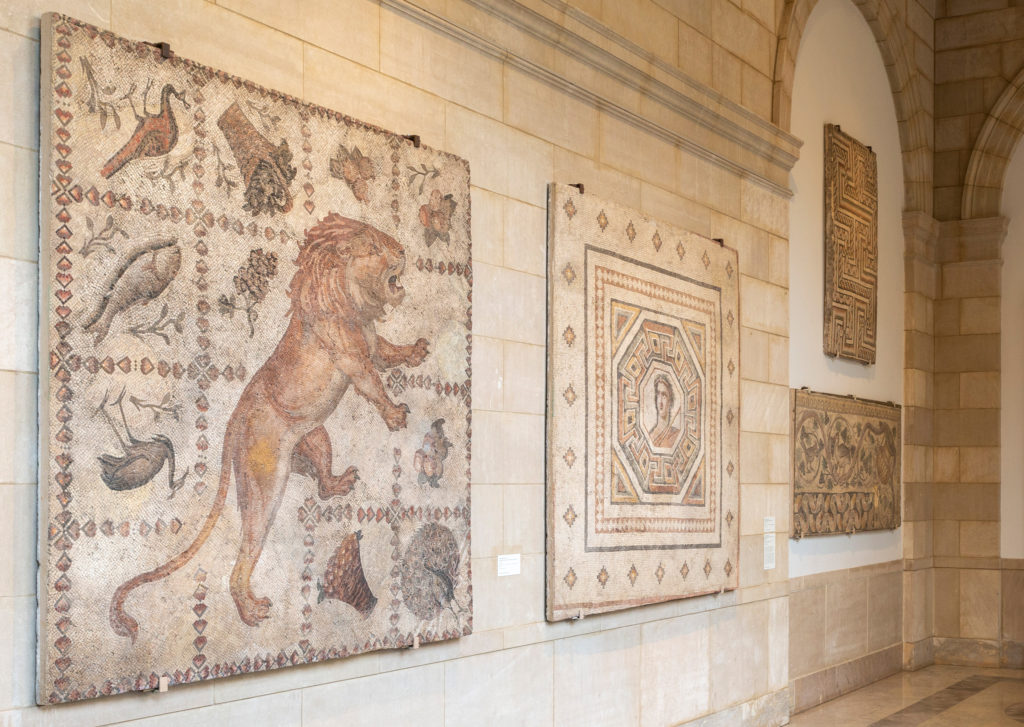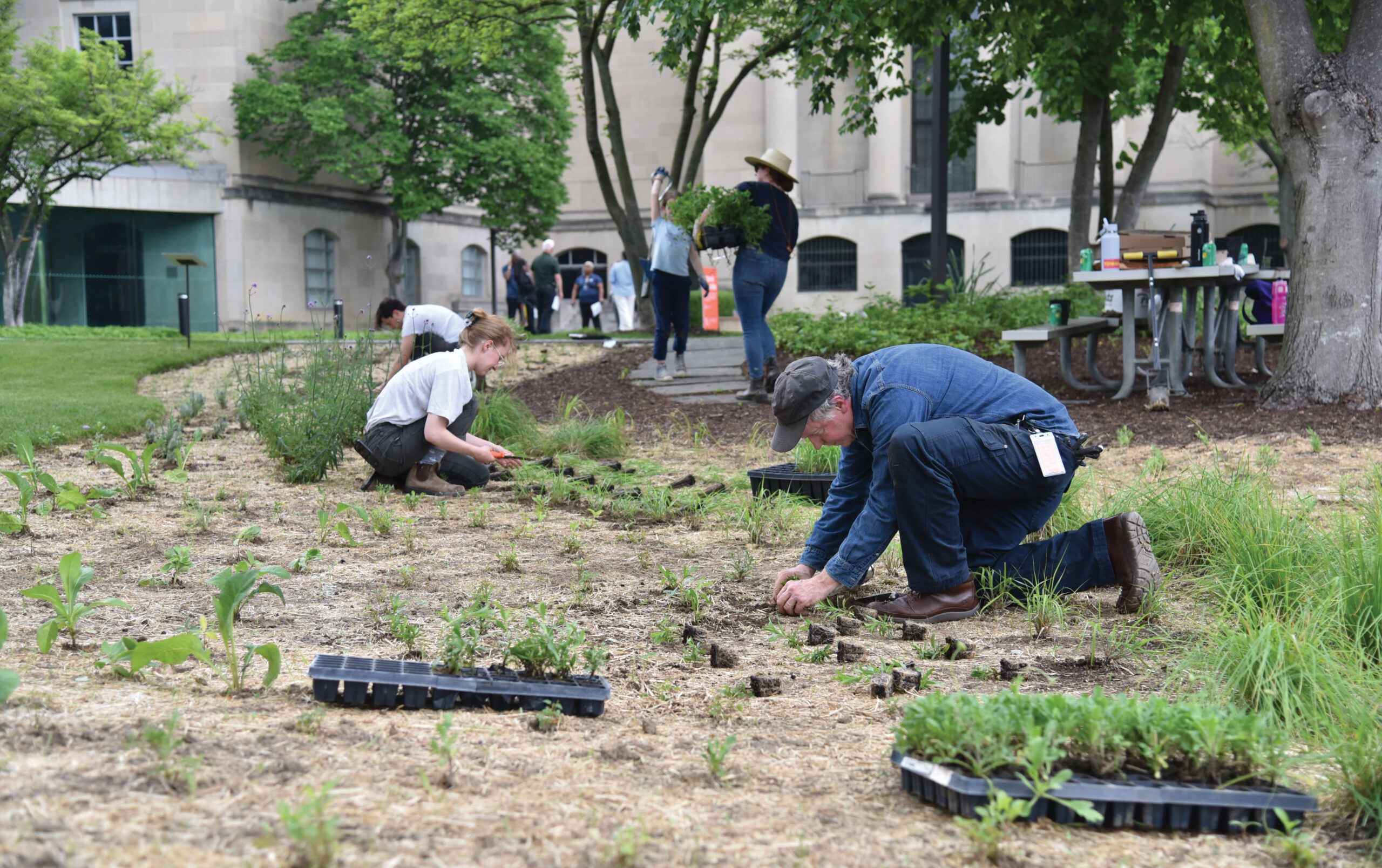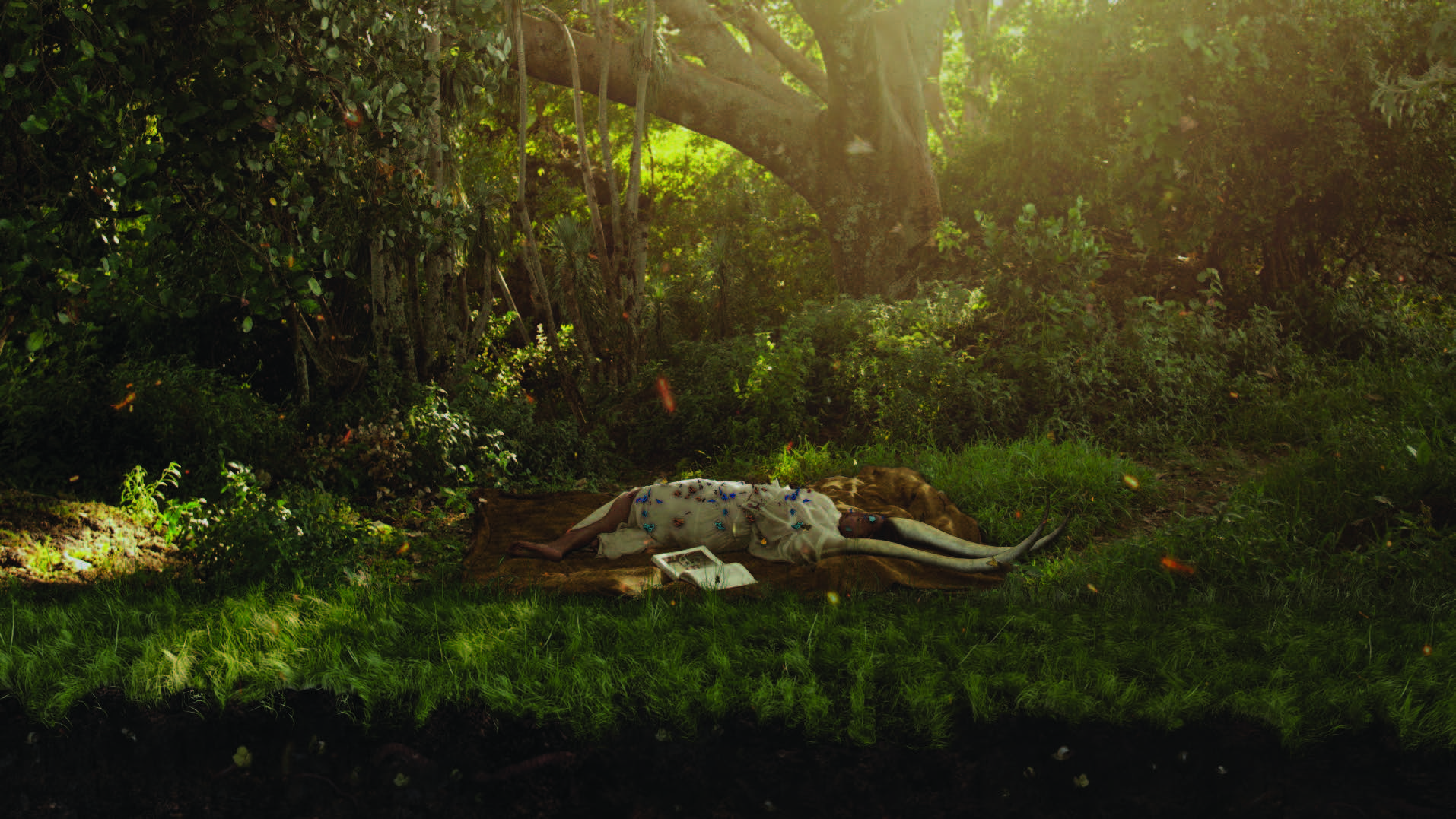
New Interpretation for the Antioch Floor Mosaics Reflect Many Cultural Influences
Situated near the coast of the Mediterranean Sea in present-day Türkiye, the ancient cities of Antioch and Daphne were thriving cultural, business, and political centers between the 1st and 6th centuries. Since the 1940s, fragments of floor mosaics from the homes of cosmopolitan elites of those metropolitan locales have adorned the walls of the Baltimore Museum of Art’s colloquially named Antioch Court. And until the summer of 2022, very little had changed in how the Museum has explained these mosaics to visitors.
As curator Dr. Kevin Tervala, Associate Curator and Department Head for the Arts of Africa, the Americas, Asia, and the Pacific Islands, explained, 20th century art history framed the ancient floor mosaics as stand-ins for Roman painting. So, the mosaics are hung on the walls in the BMA’s Antioch Court like paintings and were given names similar to paintings — like The Striding Lion. But far more problematically, the floor mosaics were serving as a stand-in for all of Roman antiquity.
Antioch was located on the eastern frontier of the Roman Empire, and the city held fast to the Greek cultural ideals that preceded Roman rule more deeply than the other cities that comprised the empire. “Antioch was also greatly influenced by empires to its east—the Sasanian Empire centered on the Iranian Plateau, for example,” Tervala noted. Further, it was a city where traders and travelers congregated, with a populace of Syrians, Greeks, Romans, and people from throughout the Arabian Peninsula. With this history in mind, Tervala asserts, “it really is incorrect to interpret these mosaics solely through a Roman lens—and a Christian one at that.”
“The ancient world was much like our own.
It was a globalized space in which people
and ideas and artworks were always
moving and flowing, irrespective of borders.”
Dr. Kevin Tervala, Associate Curator and Department Head for the Arts of Africa, the Americas, Asia, and the Pacific Islands
So, Tervala and colleagues at the BMA set about researching, writing, and designing new text panels to accompany the mosaics in the Museum, ones that honor the diverse and vibrant life of ancient Antioch and set aside the overdetermined idea of the Roman empire that formed the basis of how the mosaics were interpreted for so long.
Take, for example, the Fragment of floor mosaic depicting beribboned parrots. The new text explains how the design of the mosaic reflects the artistic exchanges between Antioch and the Sasanian Empire. “The motif depicted on the mosaic is a Sasanian one found on textiles, silverwork, and stucco. And the pattern of the parrots—with one row facing one direction, and the next facing another direction—is deeply reminiscent of the sort of silk imported into the Sasanian Empire from China,” Tervala said.

Maps accompanying the new texts place ancient Syria, the historic location of the mosaics, at their center. While Italy and Greece do not appear in these maps, the Iranian Plateau, the Arabian Peninsula, and Egypt do, further underscoring the importance of the people, cultures, and resources of those locations to the mosaics. One small example surfaced in the texts is that while many of the tesserae (cubes) used in the mosaics were sourced from local stone, some of the glass tesserae required minerals mined as far away as Egypt.
Visitors might notice each mosaic label contains a sector location. These sectors reflect the archeological sites from which each mosaic was excavated during the exploration and excavation project undertaken in the 1930s by Princeton University, the Worcester Art Museum, the Musées Nationaux de France, and of course, the BMA, with the approval of the Syrian Antiquities Service. Adding the sectors to the texts is a reminder that these mosaics are fragments of entire floors, of homes and built spaces where people once walked every day. Furthering this, is that each piece is titled to reflect its fragmentary nature. So, The Striding Lion is now called Fragment of floor mosaic depicting a striding lion, birds, and crops.

Under the guidance of Dr. Asma Naeem, Dorothy Wagner Wallis Director at the BMA, the BMA’s curatorial team continues to work to share with visitors how art defies geopolitical borders and creates real connections between people across space and time. Tervala points out how this is manifested in the new texts for the Antioch Floor Mosaics, saying, “we see that the ancient world was much like our own. It was a globalized space in which people and ideas and artworks were always moving and flowing, irrespective of borders.”
The new texts offer Museum visitors the opportunity to see the Antioch Floor Mosaics with new eyes and connect with them through material history, stories of conservation, archaeology, and, of course, the people who lived with and around them. “The people and gods and patterns that we see in these mosaics are reflective not only of the values and desires of ancient Antiochenes, but they are also reflective of the material and artistic world in which they’ve lived,” Tervala said. “Museum visitors can look at these floor mosaic fragments and understand a larger world that really was not all that different from the one that we live in today.”
(February 10, 2023) We’re heartbroken by the devastating earthquakes that hit Türkiye and Syria this week. The mosaics displayed at our Museum come from Antakya (ancient Antioch), which is among the areas hardest hit. If you enjoy our presentation of mosaics, we hope you’ll consider making a donation to support those affected in the city of their origin. Here’s how to help.




